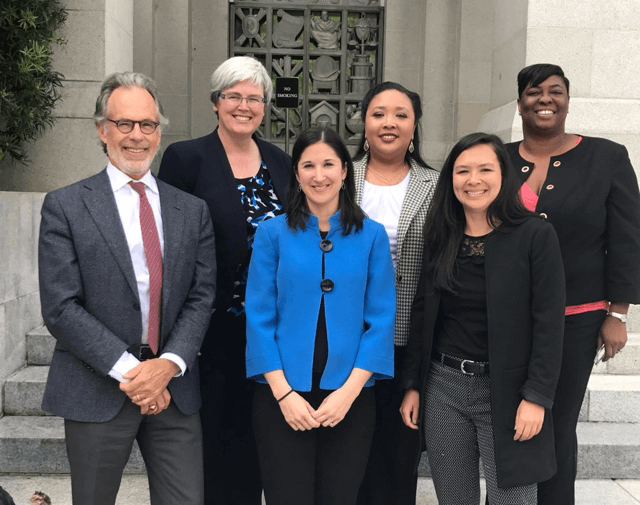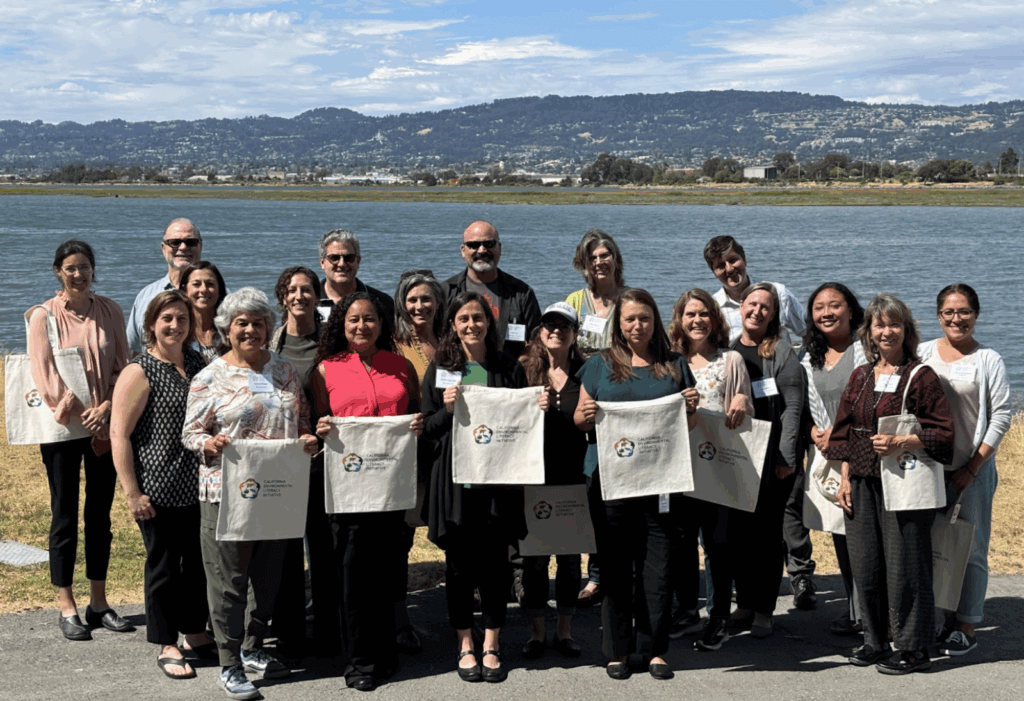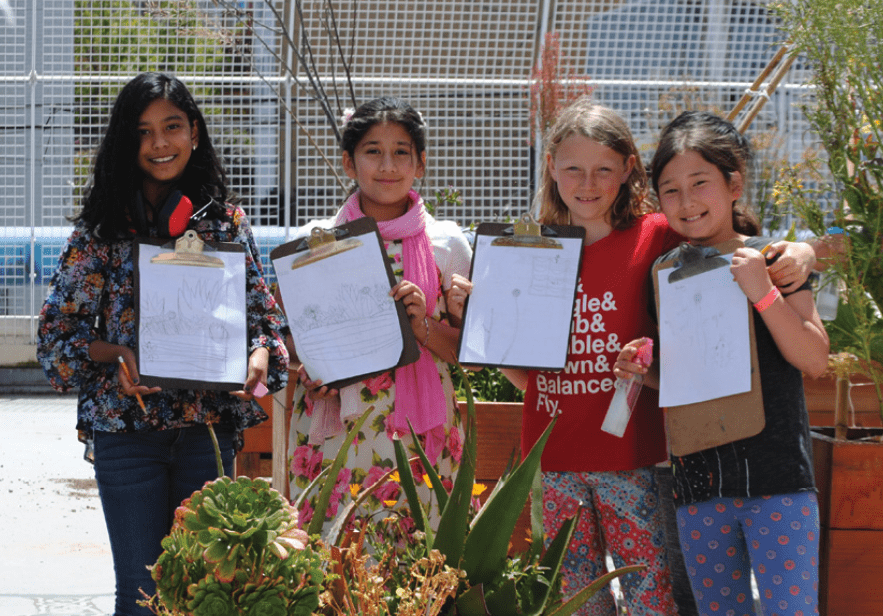As CAELI moves into a new phase of its evolution, we celebrate the leadership of outgoing CAELI co-chair Juanita Chan and welcome Nate Ivy as the new co-chair. Both have been instrumental in shaping CAELI’s mission and model, and their shared commitment to systems change, equity, and community-driven progress reflects the heart of the network. In this conversation, Juanita and Nate reflect on what’s been accomplished and what’s ahead.
What are you most proud of from your time leading CAELI?
Juanita: I’m most proud of how much growth and clarity has come from our CAELI members over the years. Our mission has remained constant, but the way we approach it, the model, the tools, the outcomes, has shifted in really meaningful ways. Bringing the conversation back to outcomes, was something I felt was really important. It’s easy to get caught up in ideas, but I always wanted to make sure we were creating real, tangible results for students.
What are some visible outcomes you’ve seen?
Juanita: One of the most rewarding shifts was seeing Innovation Hub products come to life like the podcast, webinars, and Collective Action resources. These used to just be topics of conversation, and now they’re actual tools educators can use. That movement from talk to action has been a defining marker of our progress.
And beyond the products, I’m proud of the community itself. CAELI has become something people want to be part of and a space of belonging and shared commitment. That’s powerful.
What excites you most about stepping into the co-chair role?
Nate: So many things. I was part of the original CAELI task force that created California’s Blueprint for Environmental Literacy, so this feels like coming full circle. I’m grateful California and Ten Strands have invested in this work and in helping all students build environmental literacy and a connection to the natural world. It’s energizing to collaborate with partners who share that purpose.
How have you seen CAELI evolve over time?
Juanita: The evolution has been significant. We started with the Blueprint, a very state-level effort, and transitioned into a real network producing real products. That shift was huge. What’s even more exciting is that CAELI is now showing up in the day-to-day work of districts. It’s no longer something extra, it’s something people integrate.
In my district, I’m hearing students talk about environmental careers in law, management, and policy. After two decades in education, I’ve never seen this kind of interest in environmental pathways before. That’s the ripple effect of the CAELI network.
How did you first get connected to CAELI?
Nate: My connection began with the Environmental Literacy Task Force and the work on the Blueprint. I was also part of the Steering Committee. What really drew me in was the sense that, while individual teachers cared deeply about this work, they often felt isolated, like being a recycling advocate at their school, they were just one person pushing for change. I reached out to CAELI because I wanted to be part of something larger, a community of practice where we could support one another.
Juanita: My connection came through the California Framework and Criteria Committee for NGSS, where I met Jerry Lieberman, then Karen Cowe, then Ten Strands. I started on CAELI’s first Equity Committee, co-chaired that group, and eventually co-chaired CAELI itself. This work has changed the way I think about education and leadership.
What have you learned about systemic change through your leadership?
Juanita: Systemic change in education is hard, it’s a bureaucratic system. To make real change, you have to document it. You have to explain what you’re doing and why, and have a clear theory of change.
When I first joined CAELI, so much great work was happening, but a lot of it wasn’t written down. We were so busy doing the work, we didn’t always take the time to reflect or record. I’ve come to deeply value that practice. It’s what allows change to live beyond any one person.
It’s also why I pursued a doctorate in organizational leadership and change. I want to understand not just what we do, but how we do it so others can follow, replicate, and evolve it.
How has equity informed your approach to leadership?
Juanita: For me, equity isn’t something I have to remember to include, it’s how I live. I want systems that outlast me. I want families to feel empowered to connect with the natural world—to understand it, enjoy it, and see it as theirs. Especially for families with a history of land-based trauma, nature can feel like a source of pain. We have to reframe that and create access.
Nate: Equity work starts with deep community connection. When you live and work in the same place, you understand the local context—the challenges, the history, the opportunities. That kind of insight is necessary for real improvement.
Equity also means making sure this work is not just accessible in theory, but in practice. Outdoor learning and environmental literacy shouldn’t be luxuries, they should be part of every student’s experience. And that means shifting both infrastructure and mindset.
What are some of the biggest challenges this work faces?
Nate: There are so many pressures on teachers and schools—testing, time, competing demands. Even though we know environmental literacy supports engagement and well-being, it can still feel like there’s no room for it.
Another challenge is that it’s often seen as a “science thing,” but it spans across disciplines—policy, social studies, media literacy, even economics. There’s also the issue of coordination. A lot of people see the need, but it’s not always clear who’s supposed to act. CAELI helps bring everyone to the table and clarifies those roles.
What gives you hope?
Nate: The students. They care deeply and are finding their voices—passing climate resolutions, speaking at city council meetings, organizing with intention. They’re doing more than we ever did at their age. I worked with a student who created a sustainability commissioner position in her district. Recently, she was working with John Kerry on the UN Sustainable Development Goals. That arc started in high school.
And these moments of intergenerational collaboration—like a recent tree-planting event with city officials, the school, and local nonprofits—all investing in a hopeful future. That kind of shared ownership is inspiring.
What do you hope to accomplish as co-chair?
Nate: Right now, CAELI is transitioning to a new model. I want to help communicate that clearly and make sure people feel a sense of belonging within it. One piece of that is helping people understand how the Blueprint for Environmental Literacy connects to their work.
I also want to scale our work. We’ve collected great data that shows what’s working. Now we need to expand access and deepen support, especially for students historically left out of these opportunities.
Any final thoughts?
Juanita: Changing the world sounds overwhelming, but I always say: commit to one thing. Do it well. Then the next. That’s how habits form, how systems shift.
Nate: I know I’m just one of many committed people working toward this shared vision. CAELI is built on shared leadership and there’s room for everyone. I’m excited to continue learning, connecting, and finding new ways to strengthen this work.
As CAELI enters this new chapter, Juanita and Nate’s journeys reflect a continuity of values: shared leadership, systems thinking, deep community connection, and a focus on student impact. Their leadership paths overlap in meaningful ways, building on the past while moving boldly into the future.










